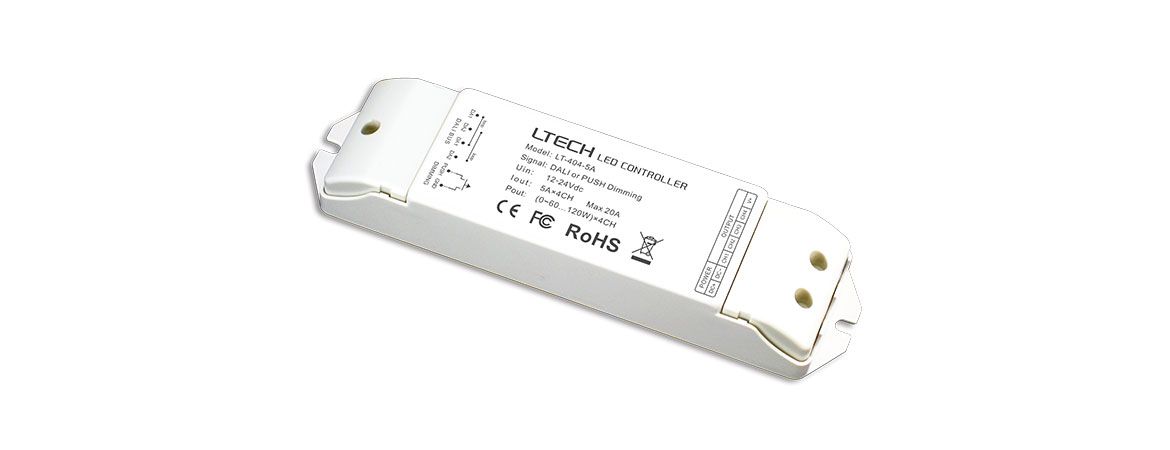- Product Knowledge
All You Need to Know About LED Drivers
LED technology has revolutionized the lighting industry, providing energy-efficient and long-lasting lighting solutions. At the core of every LED lighting system is the LED driver, a critical component that ensures optimal performance and longevity of the LEDs. This article aims to provide a comprehensive overview of LED drivers, including their types, working principles, benefits, and innovations.
What Are LED Drivers?
LED drivers are electrical devices that regulate the power supply to LEDs (Light Emitting Diodes). They ensure that LEDs receive the correct amount of current and voltage, preventing damage and ensuring efficient operation. Unlike traditional power supplies, LED drivers are specifically designed to meet the unique requirements of LEDs, which have different electrical characteristics than other light sources.
Types of LED Drivers

Constant Current LED Drivers
Constant current LED drivers deliver a steady current to the LEDs, regardless of fluctuations in voltage. They are ideal for applications where maintaining consistent brightness is crucial, such as in commercial and industrial lighting. These drivers are designed to match the current requirements of the LEDs, ensuring optimal performance and longevity.
Constant Voltage LED Drivers
Constant voltage LED drivers provide a fixed output voltage, making them suitable for LEDs that require a specific voltage to operate. They are commonly used in residential lighting and DIY LED projects. These drivers are ideal for applications where the LED configuration involves multiple LEDs arranged in series or parallel, each requiring the same voltage.
Programmable LED Drivers
Programmable LED drivers offer flexibility by allowing users to adjust the output current and voltage. This feature is beneficial for customizing lighting systems and adapting to different LED configurations. Programmable drivers are ideal for applications that require variable lighting conditions or need to accommodate changes in LED specifications over time.
Dimmable LED Drivers
Dimmable LED drivers support various dimming methods, including Pulse Width Modulation (PWM) and analog dimming. They enable users to control the brightness of the LEDs, enhancing energy savings and ambiance. These drivers are commonly used in residential, commercial, and theatrical lighting where variable light intensity is desired.
How LED Drivers Work
LED drivers operate by converting the high voltage AC (Alternating Current) from the mains into low voltage DC (Direct Current) suitable for LEDs. They regulate the current flowing through the LEDs to ensure stable and efficient operation. Matching the driver’s specifications with the LED’s requirements is crucial to prevent overheating and prolong the lifespan of the LEDs. Properly matched drivers ensure that LEDs operate within their specified parameters, providing consistent brightness and color.
Key Components of LED Drivers
Input and Output Circuitry
The input circuitry of an LED driver receives the AC power and converts it to DC. The output circuitry then regulates the DC power to match the needs of the LEDs. This conversion process involves rectification, filtering, and voltage regulation to ensure a stable output.
Control Mechanisms
Control mechanisms in LED drivers manage the power delivery, including dimming and programmable settings. These mechanisms ensure that the LEDs operate within safe parameters, providing protection against overcurrent, overvoltage, and thermal overload.
Protection Features
LED drivers include protection features such as overload protection, short circuit protection, and thermal shutdown. These features prevent damage to the LEDs and the driver itself, enhancing reliability and safety. Protection features are essential for maintaining the longevity and performance of both the LEDs and the driver.
Benefits of Using LED Drivers
Energy Efficiency
LED drivers optimize the power consumption of LEDs, reducing energy waste and lowering electricity bills. By providing the correct current and voltage, drivers ensure that LEDs operate at their highest efficiency.
Enhanced Lifespan of LEDs
By providing stable and regulated power, LED drivers help extend the lifespan of LEDs, minimizing maintenance and replacement costs. Properly regulated power prevents overheating and current surges, which can damage LEDs.
Improved Performance and Reliability
LED drivers ensure that LEDs operate at their best, delivering consistent brightness and performance. They also protect LEDs from electrical issues, enhancing overall reliability. High-quality drivers contribute to better light quality and longer service life.
Selecting the Right LED Driver
Factors to Consider
When selecting an LED driver, consider factors such as voltage, current, compatibility with the LED specifications, and the application’s requirements. Ensure that the driver’s output matches the LED’s input needs to prevent malfunction.
Understanding LED Specifications
Review the LED’s datasheet to understand its voltage and current requirements. This information is crucial for choosing a compatible LED driver. The datasheet provides detailed information on the electrical characteristics and operating conditions of the LEDs.
Common Mistakes to Avoid
Avoid common mistakes such as using an incorrect driver type, mismatched voltage and current ratings, and neglecting the driver’s power rating. These mistakes can lead to poor performance and damage to the LEDs. Ensure that the driver is designed for the specific type of LED and application.
Installation and Maintenance of LED Drivers
Installation Best Practices
Follow the manufacturer’s installation guidelines to ensure proper setup. Secure all connections, and avoid exposing the driver to extreme temperatures and moisture. Proper installation prevents electrical issues and ensures safe operation.
Tips for Maintaining Optimal Performance
Regularly inspect the LED driver and the LED system for signs of wear and damage. Keep the driver clean and free from dust to ensure proper ventilation and cooling. Periodic maintenance helps maintain the performance and longevity of the lighting system.
Troubleshooting Common Issues
Common issues with LED drivers include flickering, dimming inconsistencies, and overheating. Check the connections, ensure the driver is compatible with the LED, and replace any faulty components as needed. Troubleshooting helps identify and resolve issues before they affect the performance of the LEDs.
Innovations in LED Driver Technology
Smart LED Drivers
Smart LED drivers offer advanced features such as remote control, automation, and integration with smart home systems. They provide greater control and convenience for users. Smart drivers can be controlled via apps and integrated into home automation systems.
Integration with IoT and Smart Home Systems
Modern LED drivers can be integrated with the Internet of Things (IoT) and smart home platforms, allowing for seamless control and automation of lighting systems through mobile apps and voice commands. This integration provides enhanced functionality and user experience.
Future Trends
The future of LED driver technology includes further advancements in energy efficiency, miniaturization, and enhanced programmability. Expect to see more drivers with integrated sensors and adaptive capabilities. Innovations will continue to improve the performance and versatility of LED lighting systems.
Frequently Asked Questions
The most common types of LED drivers are constant current, constant voltage, programmable, and dimmable drivers. Each type serves different applications and requirements.
To choose the right LED driver, consider the voltage and current requirements of your LEDs, the type of application, and any additional features such as dimming or programmability. Match the driver’s specifications with the LED’s needs to ensure compatibility and optimal performance.
No, using a constant current driver with a constant voltage LED can cause malfunction and damage. Always match the driver type with the LED’s requirements.
Programmable LED drivers offer flexibility and customization by allowing users to adjust the output current and voltage. This makes them ideal for projects that require specific lighting configurations and adaptable solutions.
Flickering in LED lighting can be caused by several issues, including incompatible drivers, loose connections, or power supply fluctuations. Check the connections, ensure the driver is suitable for the LEDs, and replace any faulty components to resolve the issue.
LED drivers play a crucial role in the performance and longevity of LED lighting systems. Understanding the different types of LED drivers, their working principles, and how to select the right one for your needs can significantly enhance your lighting projects. As technology advances, LED drivers continue to evolve, offering more innovative and efficient solutions for various applications.



